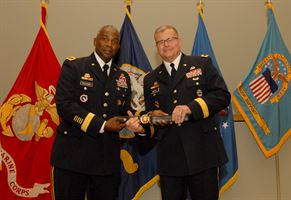An overview of the responsibilities of General and Flag Officer Positions in the United States Armed Forces. While Congress has specified functions or duties for a few key positions—such as members of the Joint Chiefs of Staff, the Combatant Commanders, the top two officers of each service, the Commander of U.S. Special Operations Command, and the Chief of the National Guard Bureau—the great majority of GFO positions are not defined in statute. In these instances DOD uses the following criteria for determining whether a position should be filled by a general or flag officer:

- Authority to make decisions and commit resources
- Degree of independence of operation
- Development of policy
- Effect on the prestige of the nation or the armed force
- Forces, personnel, value of equipment, total obligation authority
- Geographic area of responsibility
- Grade and position of superior, principal subordinates, and lateral points of
coordination. - Impact on national security and other national interests
- Magnitude of responsibilities
- Mission and special requirements
- National commitment to international agreements
- Nature, characteristics, and function of the position
- Number, type, and value of resources managed and employed
- Official relations with other U.S. and foreign governmental positions
National Guard and Reserve GFOs are not addressed here.
Military Compensation for General and Flag Officers
There are three main ways in which military personnel, including general and flag officers, are compensated:
- Cash compensation (pay and allowances)
- Non-cash compensation (benefits)
- Deferred compensation (retired pay and benefits).